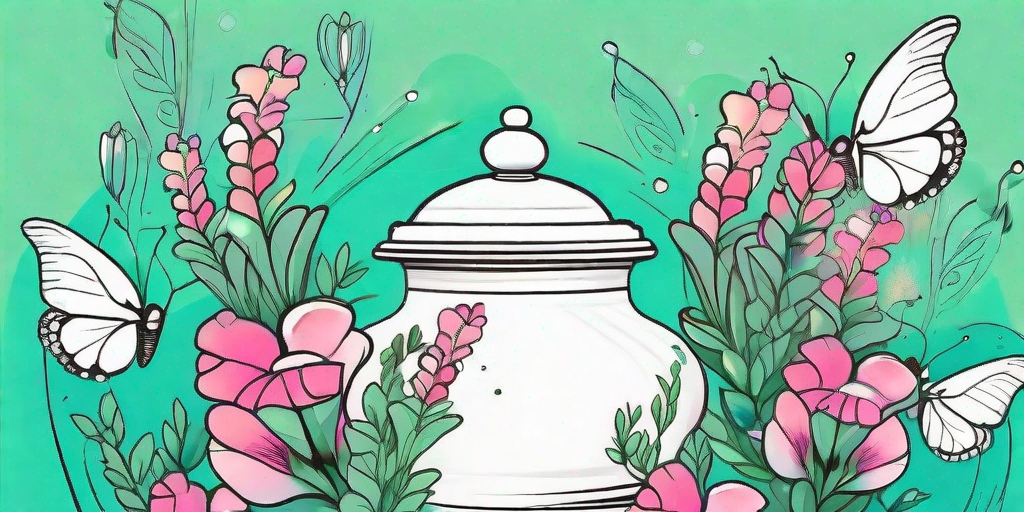
Welcome to the enchanting world of snapdragons, where petals resemble the jaws of a mythical beast, and the vibrant hues can brighten even the gloomiest of days. If you've been yearning to add a dash of magic to your balcony or patio, you've come to the right place. Growing snapdragons in containers is not just a horticultural exercise, it's an adventure. So, put on your gardening gloves, and let's get started!
Understanding the Snapdragon: A Brief Introduction
Snapdragons, or Antirrhinum majus, are native to the Mediterranean region. They are known for their dragon-shaped flowers that open and close when squeezed - hence the name. These plants come in a riot of colors, from the softest pastels to the most vibrant reds and yellows. They can grow anywhere between 6 inches to 3 feet tall, making them perfect for container gardening.
But it's not just about the looks. Snapdragons are hardy plants that can withstand a fair bit of neglect. They are also excellent for attracting pollinators like bees and butterflies. So, by growing snapdragons, you're not just beautifying your space, but also doing your bit for the environment.
The Magic Recipe: How to Grow Snapdragons in Containers
Choosing the Right Container
When it comes to choosing a container for your snapdragons, size does matter. These plants have a robust root system that needs room to grow. A pot that's at least 12 inches deep and wide is ideal. Remember, the larger the container, the less frequently you'll need to water your plants.
Material-wise, you can go for plastic, ceramic, or terracotta pots. Just make sure they have drainage holes to prevent waterlogging. If you're feeling particularly cheeky, you could even use an old boot or a teapot - anything that adds a bit of whimsy to your garden!
Planting the Seeds
Now, onto the fun part - planting the seeds. Fill your container with a good quality potting mix, leaving about an inch of space from the top. Sprinkle the snapdragon seeds on the surface and lightly cover them with more potting mix. Water gently to avoid dislodging the seeds.
Place the container in a sunny spot, and wait for the magic to happen. With the right care, you should see seedlings sprouting in about 10-14 days. Remember, patience is a virtue, especially in gardening!
Caring for Your Snapdragons
Once your snapdragons have sprouted, they'll need a bit of TLC. These plants love the sun, so make sure they get at least 6 hours of sunlight each day. Water them regularly, but avoid getting the foliage wet to prevent fungal diseases.
As for feeding, a slow-release fertilizer applied at the beginning of the growing season should do the trick. And don't forget to deadhead spent flowers to encourage more blooms. After all, the more, the merrier!
Common Snapdragon Problems and How to Solve Them
While snapdragons are relatively low-maintenance, they can sometimes fall prey to pests and diseases. Aphids and rust are common problems, but they can be easily controlled with insecticidal soap and fungicides, respectively.
Overwatering can also lead to root rot. So, remember the golden rule of watering: it's better to underwater than overwater. If you notice yellowing leaves or a foul smell, it might be time to check your watering habits.
Frequently Asked Questions
- Can I grow snapdragons indoors?
Yes, you can. However, they need plenty of sunlight, so place them near a south-facing window. Also, indoor air can be dry, so consider using a humidifier or placing the pot on a tray filled with pebbles and water.
- Do snapdragons bloom all year round?
Snapdragons are cool-season plants, so they bloom in spring and fall. In warmer climates, they can bloom throughout the winter as well.
- Are snapdragons annuals or perennials?
Technically, snapdragons are perennials, but they are often grown as annuals because they don't perform well in hot, humid summers.
Conclusion
There you have it - your comprehensive guide to growing snapdragons in containers. With a bit of care and a lot of love, you can create your own magical garden, one snapdragon at a time. So, what are you waiting for? It's time to pot up some magic!
And remember, gardening is not just about the destination, it's about the journey. So, enjoy every moment, from planting the seeds to seeing the first bloom. Happy gardening!















